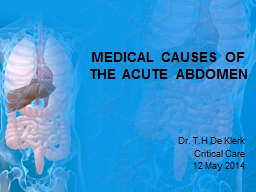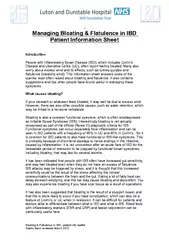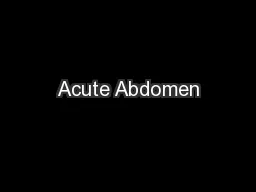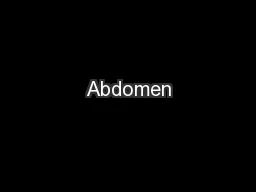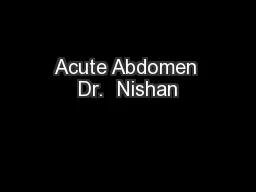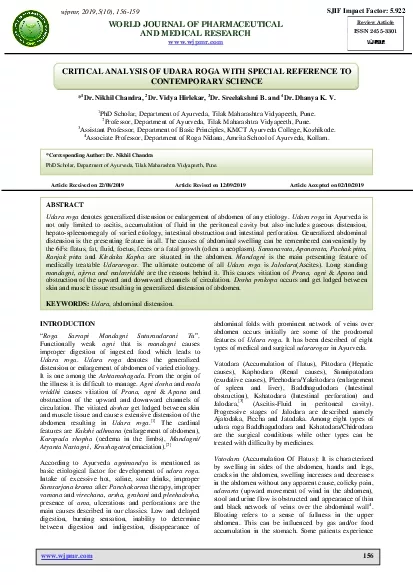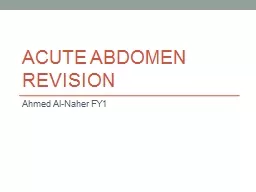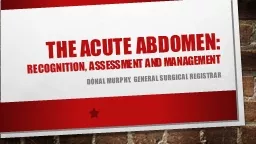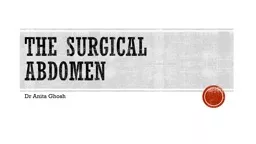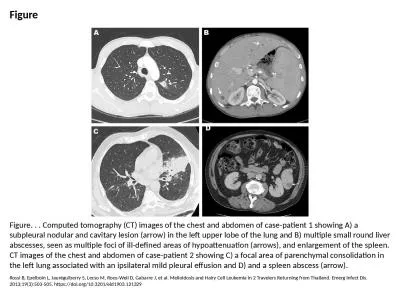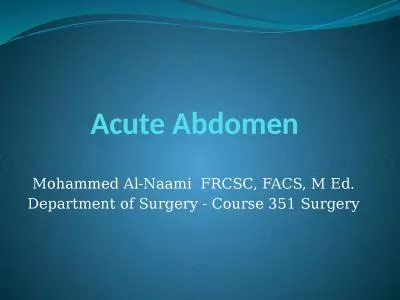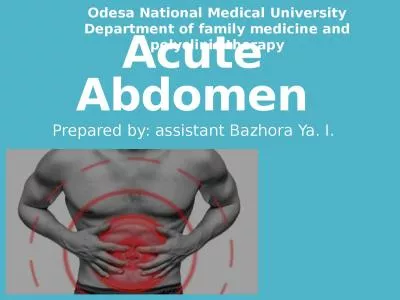PPT-MEDICAL CAUSES OF THE ACUTE ABDOMEN
Author : pagi | Published Date : 2023-11-15
Dr TH De Klerk Critical Care 12 May 2014 DEFINITION The term acute abdomen is the medical slang word that denotes an acute serious abdominal condition usually treated
Presentation Embed Code
Download Presentation
Download Presentation The PPT/PDF document "MEDICAL CAUSES OF THE ACUTE ABDOMEN" is the property of its rightful owner. Permission is granted to download and print the materials on this website for personal, non-commercial use only, and to display it on your personal computer provided you do not modify the materials and that you retain all copyright notices contained in the materials. By downloading content from our website, you accept the terms of this agreement.
MEDICAL CAUSES OF THE ACUTE ABDOMEN: Transcript
Download Rules Of Document
"MEDICAL CAUSES OF THE ACUTE ABDOMEN"The content belongs to its owner. You may download and print it for personal use, without modification, and keep all copyright notices. By downloading, you agree to these terms.
Related Documents

